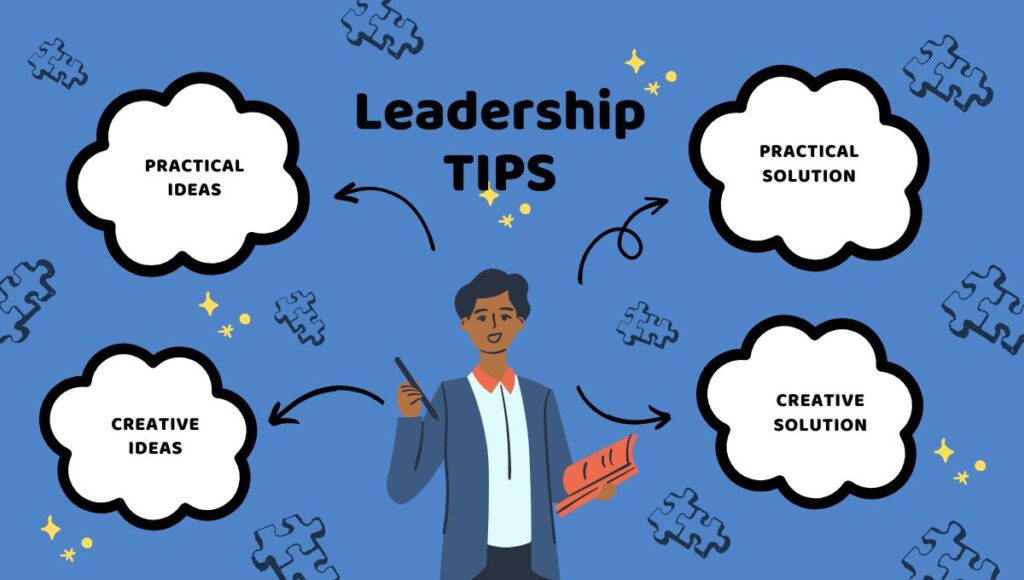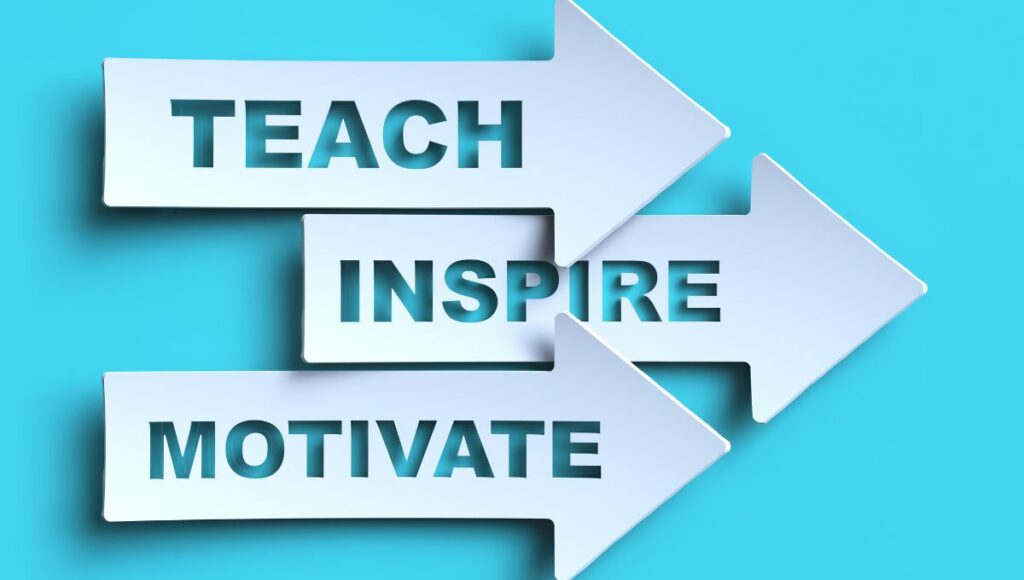Leadership Secrets: 10 Powerful Tips from the World’s Most Influential Leaders.

Hi guys, and welcome to my awesome blog on “Leadership Secrets. If you want to learn how to become a better leader, you are in the right place. In this blog post, I will reveal to you 10 amazing tips from the world’s most influential leaders that can help you boost your leadership skills and performance. These tips are based on the wisdom and experience of some of the greatest leaders in history, such as Martin Luther King Jr., Steve Jobs, Nelson Mandela, and many more.
By following these tips, you will be able to:
- Have a clear vision and communicate it effectively
- Be humble and learn from others
- Inspire and motivate others
- Be decisive and take action
- Be adaptable and embrace change
- Be ethical and trustworthy
- Be collaborative and inclusive
- Be innovative and creative
- Be resilient and persistent
- Be passionate and enthusiastic
These tips will help you avoid common leadership mistakes, challenges, and styles that can affect your leadership effectiveness. They will also help you grow your leadership potential and achieve your goals.
So, are you ready to discover the secrets of the world’s most influential leaders? Let’s dive in!
Leadership Tip 1: Have a clear vision and communicate it effectively

One of the most important qualities of a good leader in leadership is having a clear vision. A vision is a mental picture of what you want to achieve in the future. It is your purpose, your mission, your dream. A vision gives you direction, focus, and motivation. It also helps you align your actions with your values and goals.
But having a clear vision is not enough. You also need to communicate it effectively to others. You need to share your vision with your followers, your team, your stakeholders, and anyone else who can help you realize it. You need to make them understand why your vision matters, how it benefits them, and what they can do to support it.
One of the best ways to communicate your vision effectively is by using storytelling. Storytelling is a powerful tool that can capture people’s attention, emotions, and imagination. It can also make your vision more memorable, relatable, and inspiring. By telling stories that illustrate your vision, you can connect with your audience on a deeper level and persuade them to join you on your journey.
Another way to communicate your vision effectively is by using visual aids. Visual aids are any objects or images that can help you convey your message more clearly and vividly. They can include charts, graphs, diagrams, photos, videos, or even drawings. Visual aids can help you simplify complex ideas, highlight key points, and create a lasting impression on your audience.
For example, one of the leaders who had a clear vision and communicated it effectively was Martin Luther King Jr., the civil rights activist who fought for racial equality in America. He had a vision of a society where people of all races could live together in harmony and freedom. He communicated his vision through his famous speech “I Have a Dream”, where he used storytelling and visual aids to inspire millions of people around the world.
He used storytelling by sharing his personal experiences of discrimination and injustice, as well as his hopes and dreams for the future. He used visual aids by referring to symbols such as the Lincoln Memorial, the Emancipation Proclamation, and the American flag. He also used metaphors such as “the valley of despair”, “the mountain of hope”, and “the table of brotherhood” to create vivid images in his listeners’ minds.
By having a clear vision and communicating it effectively, Martin Luther King Jr. was able to mobilize a massive movement that changed the course of history through his leadership.
Some common leadership mistakes that can result from having a vague or inconsistent vision are:
- Losing focus: Without a clear vision, you may lose sight of what you are trying to achieve and why. You may get distracted by irrelevant or conflicting goals, or by external pressures or temptations. You may also lose confidence in yourself and your abilities.
- Confusing followers: Without a clear vision, you may confuse your followers about what you expect from them and what they can expect from you. You may send mixed signals or contradict yourself. You may also fail to provide feedback or recognition for their efforts.
- Missing opportunities: Without a clear vision, you may miss opportunities to grow or improve yourself or your organization. You may overlook potential allies or partners who share your vision or who can help you achieve it. You may also ignore emerging trends or threats that can affect your vision.
Some practical advice on how to create and communicate a clear vision are:
- Define your vision: To create a clear vision, you need to define what you want to achieve in the future. You need to answer questions such as: What is your purpose? What is your mission? What are your values? What are your goals? What are your strategies? How will you measure your success?
- Write down your vision: To make your vision more concrete and tangible, you need to write it down. You need to use clear and concise language that expresses your vision in a positive and inspiring way. You also need to make your vision specific, measurable, achievable, relevant, and time-bound (SMART).
- Share your vision: To communicate your vision effectively, you need to share it with others. You need to use different methods and channels to reach your audience, such as speeches, presentations, meetings, emails, newsletters, social media, or websites. You also need to tailor your message to suit your audience’s needs, interests, and preferences.
- Repeat your vision: To reinforce your vision, you need to repeat it often. You need to remind yourself and others of your vision regularly, especially when you face challenges or setbacks. You also need to celebrate your achievements and progress towards your vision.
- Live your vision: To embody your vision, you need to live it. You need to act in accordance with your vision and demonstrate it through your behavior and decisions. You also need to model your vision for others and encourage them to follow your example.
Leadership Tip 2: Be humble and learn from others

Another important quality of a good leader is being humble. Humility is the ability to acknowledge your strengths and weaknesses, and to recognize the value and contribution of others. Humility is not about being weak or passive, but about being realistic and respectful.
Being humble helps you learn from others. Learning from others is the process of acquiring new knowledge, skills, or perspectives from other people who have more experience or expertise than you. Learning from others can help you improve yourself and your organization, as well as build trust and rapport with others.
One of the best ways to learn from others is by asking for feedback. Feedback is any information or opinion that can help you evaluate or improve your performance or behavior. Feedback can come from different sources, such as your followers, peers, superiors, customers, or mentors. Feedback can be positive or negative, formal or informal, solicited or unsolicited.
Another way to learn from others is by admitting mistakes. Mistakes are any actions or decisions that lead to undesirable or unintended outcomes. Mistakes can happen to anyone, regardless of their level of skill or experience. Mistakes can be a source of learning and improvement if you acknowledge them, analyze them, and correct them.
For example, one of the leaders who was humble and learned from others was Abraham Lincoln, the 16th president of the United States who led the country through the Civil War and abolished slavery. He was humble enough to admit his limitations and seek advice from others. He learned from others by asking for feedback and admitting mistakes.
He asked for feedback by creating a cabinet of advisors who had different opinions and backgrounds than him. He listened to their views and perspectives on various issues and policies. He also consulted with experts and scholars on various topics such as military strategy, economics, and history.
He admitted mistakes by acknowledging his errors and failures publicly and privately. He also apologized for his mistakes and took responsibility for them. He also learned from his mistakes and changed his course of action when necessary.
By being humble and learning from others, Abraham Lincoln was able to make wise and effective decisions that saved the nation and advanced the cause of freedom.
Some common leadership mistakes that can result from being arrogant or ignorant are:
- Alienating others: By being arrogant or ignorant, you may alienate others who can help you or support you. You may offend or disrespect them by dismissing their opinions, belittling their contributions, or taking credit for their work. You may also create a hostile or toxic work environment that lowers morale and productivity.
- Making poor decisions: By being arrogant or ignorant, you may make poor decisions that harm yourself or your organization. You may overlook important facts, ignore valuable insights, or reject constructive criticism. You may also become overconfident, stubborn, or complacent and fail to adapt or innovate.
- Failing to improve: By being arrogant or ignorant, you may fail to improve yourself or your organization. You may miss opportunities to learn new things, acquire new skills, or develop new perspectives. You may also become stagnant, obsolete, or irrelevant and lose your competitive edge or credibility.
Some practical advice on how to be humble and learn from others are:
- Ask for feedback: To be humble and learn from others, you need to ask for feedback regularly. You need to seek feedback from different sources who can provide you with honest and constructive feedback. You also need to listen to feedback attentively and respectfully and thank the feedback giver for their time and input.
- Admit mistakes: To be humble and learn from others, you need to admit mistakes promptly and sincerely. You need to acknowledge your mistakes without making excuses or blaming others. You also need to apologize for your mistakes and take responsibility for them.
- Learn from mistakes: To be humble and learn from others, you need to learn from your mistakes. You need to analyze your mistakes and identify the causes and consequences of them. You also need to correct your mistakes and prevent them from happening again.
Leadership Tip 3: Inspire and motivate others

Another important quality of a good leader is being able to inspire and motivate others. Inspiring and motivating others means making them feel enthusiastic, confident, and committed to achieving a common goal. Inspiring and motivating others can help you increase their performance, satisfaction, and loyalty.
One of the best ways to inspire and motivate others is by using positive reinforcement. Positive reinforcement is any action or reward that increases the likelihood of a desired behavior. Positive reinforcement can include praise, recognition, appreciation, feedback, incentives, or rewards.
Another way to inspire and motivate others is by setting goals. Goals are specific, measurable, achievable, relevant, and time-bound (SMART) objectives that guide your actions and decisions. Goals can help you clarify your expectations, track your progress, and measure your results.
For example, one of the leaders who inspired and motivated others was Nelson Mandela, the anti-apartheid activist who became the first black president of South Africa. He inspired and motivated others by using positive reinforcement and setting goals.
He used positive reinforcement by acknowledging and celebrating the achievements and contributions of his followers, his team, his allies, and his opponents. He also expressed his gratitude and appreciation for their support and cooperation. He also gave constructive feedback and encouragement to help them improve and grow.
He set goals by defining his vision of a democratic and free South Africa where all people could live in peace and harmony. He also outlined his strategies and plans to end apartheid and achieve reconciliation. He also communicated his goals clearly and frequently to keep everyone focused and aligned.
By inspiring and motivating others, Nelson Mandela was able to lead a peaceful transition from a racist regime to a multiracial democracy.
Some common leadership mistakes that can result from being uninspiring or demotivating are:
- Lowering morale: By being uninspiring or demotivating, you may lower the morale of your followers or team. You may make them feel bored, frustrated, or hopeless. You may also make them feel unappreciated, unrecognized, or unrewarded.
- Reducing productivity: By being uninspiring or demotivating, you may reduce the productivity of your followers or team. You may make them lose interest, motivation, or commitment. You may also make them perform poorly, make errors, or miss deadlines.
- Increasing turnover: By being uninspiring or demotivating, you may increase the turnover of your followers or team. You may make them quit, resign, or retire. You may also make them switch sides, join competitors, or become enemies.
Some practical advice on how to inspire and motivate others are:
- Use positive reinforcement: To inspire and motivate others, you need to use positive reinforcement frequently and appropriately. You need to praise and recognize your followers or team for their efforts and achievements. You also need to show your gratitude and appreciation for their support and cooperation. You also need to provide constructive feedback and encouragement to help them improve and grow.
- Set goals: To inspire and motivate others, you need to set goals that are SMART (specific, measurable, achievable, relevant, and time-bound). You need to clarify your expectations, track your progress, and measure your results. You also need to communicate your goals clearly and frequently to keep everyone focused and aligned.
- Share success stories: To inspire and motivate others, you need to share success stories that illustrate your vision, goals, and strategies. You need to tell stories that show how you or others overcame challenges, solved problems, or achieved results. You also need to tell stories that highlight the benefits and rewards of following your vision, goals, and strategies.
Leadership Tip 4: Be decisive and take action

Another important quality of a good leader is being decisive and taking action. Being decisive means making quick and firm decisions based on available information and evidence. Taking action means implementing your decisions effectively and efficiently.
Being decisive and taking action can help you achieve your goals faster, solve problems easier, and seize opportunities sooner. It can also help you demonstrate your confidence, competence, and commitment.
One of the best ways to be decisive and take action is by gathering information. Gathering information means collecting relevant data or facts that can help you make informed decisions. Gathering information can include researching, observing, interviewing, surveying, or experimenting.
Another way to be decisive and take action is by weighing the pros and cons. Weighing pros and cons means evaluating the advantages and disadvantages of each possible option or alternative. Weighing the pros and cons can help you compare the costs and benefits of each option or alternative, as well as the risks and uncertainties involved.
For example, one of the leaders who was decisive and took action was Winston Churchill, the prime minister of the United Kingdom who led the country during World War II. He was decisive and took action by gathering information and weighing the pros and cons.
He gathered information by consulting with experts, advisors, allies, and enemies on various aspects of the war. He also used intelligence, reports, and statistics to monitor the situation and predict the outcomes.
He weighed the pros and cons by analyzing the strengths and weaknesses of each option or alternative. He also considered the consequences and implications of each option or alternative for himself, his country, and the world.
By being decisive and taking action, Winston Churchill was able to lead his country through a devastating war and secure a victory for democracy and freedom.
Some common leadership challenges that can arise from being indecisive or inactive are:
- Missing deadlines: By being indecisive or inactive, you may miss deadlines that are important for your goals or projects. You may delay or postpone your decisions or actions due to a lack of information, confidence, or motivation. You may also waste time or resources on irrelevant or unnecessary tasks.
- Wasting resources: By being indecisive or inactive, you may waste resources that are valuable for your goals or projects. You may use more resources than needed or use them inefficiently or ineffectively. You may also lose or damage resources due to negligence, carelessness, or accidents.
- Losing credibility: By being indecisive or inactive, you may lose credibility as a leader. You may make your followers or team doubt your abilities or trustworthiness. You may also make your stakeholders or customers question your reliability or quality.
Leadership Tip 5: Be adaptable and embrace change

Another important quality of a good leader is being adaptable and embracing change. Being adaptable means being able to adjust to different situations, environments, or conditions. Embracing change means being open to new ideas, opportunities, or challenges.
Being adaptable and embracing change can help you cope with uncertainty, complexity, and diversity. It can also help you innovate, improve, and grow.
One of the best ways to be adaptable and embrace change is by being open-minded. Being open-minded means being willing to consider different perspectives, opinions, or possibilities. Being open-minded can help you learn new things, understand others, and solve problems.
Another way to be adaptable and embrace change is by learning new skills. Learning new skills means acquiring new abilities or competencies that can help you perform better or achieve more. Learning new skills can help you expand your knowledge, enhance your capabilities, and increase your confidence.
For example, one of the leaders who was adaptable and embraced change was Marie Curie, the Nobel Prize-winning scientist who discovered radioactivity and pioneered the field of nuclear physics. She was adaptable and embraced change by being open-minded and learning new skills.
She was open-minded by exploring different fields of science, such as physics, chemistry, and biology. She also collaborated with other scientists from different countries and backgrounds. She also challenged the existing theories and assumptions about the nature of matter and energy.
She learned new skills by studying various subjects, such as mathematics, languages, and literature. She also experimented with different techniques and instruments, such as spectroscopy, electrometry, and radiography. She also invented new methods and devices, such as the mobile X-ray unit.
By being adaptable and embracing change, Marie Curie was able to make groundbreaking discoveries and contributions that advanced science and medicine.
Some common leadership challenges that can arise from being rigid or resistant to change are:
- Becoming obsolete: By being rigid or resistant to change, you may become obsolete as a leader. You may fail to keep up with the changing needs, expectations, or preferences of your followers, team, stakeholders, or customers. You may also fail to adapt to the changing trends, threats, or opportunities in your industry, market, or environment.
- Losing competitiveness: By being rigid or resistant to change, you may lose your competitive edge as a leader. You may fall behind your competitors who are more flexible and responsive to change. You may also miss out on new possibilities or innovations that can enhance your performance or results.
- Facing conflicts: By being rigid or resistant to change, you may face conflicts as a leader. You may clash with others who have different views, values, or goals than you. You may also resist or reject feedback, advice, or support from others who can help you or challenge you to change.
Some practical advice on how to be adaptable and embrace change are:
- Be open-minded: To be adaptable and embrace change, you need to be open-minded. You need to be willing to consider different perspectives, opinions, or possibilities. You also need to be curious, inquisitive, and eager to learn new things, understand others, and solve problems.
- Learn new skills: To be adaptable and embrace change, you need to learn new skills. You need to acquire new abilities or competencies that can help you perform better or achieve more. You also need to practice, apply, and improve your skills regularly.
- Experiment with new ideas: To be adaptable and embrace change, you need to experiment with new ideas. You need to try out new concepts, methods, or solutions that can help you innovate, improve, or grow. You also need to test, evaluate, and refine your ideas constantly.
Leadership Tip 6: Be ethical and trustworthy

Another important quality of a good leader is being ethical and trustworthy. Being ethical means following the principles and standards of right and wrong that guide your actions and decisions. Being trustworthy means being honest, reliable, and loyal to your followers, team, stakeholders, and customers.
Being ethical and trustworthy can help you build your reputation, credibility, and influence. It can also help you avoid legal, moral, or social problems that can harm yourself or your organization.
One of the best ways to be ethical and trustworthy is by following rules. Rules are any laws, regulations, policies, or codes that govern your behavior or conduct. Rules can help you comply with the expectations and requirements of your organization, industry, or society.
Another way to be ethical and trustworthy is by keeping promises. Promises are any commitments or agreements that you make with others. Promises can help you establish trust, respect, and cooperation with others.
For example, one of the leaders who was ethical and trustworthy was George Washington, the first president of the United States who led the country during the American Revolution. He was ethical and trustworthy by following rules and keeping promises.
He followed rules by obeying the laws of the land, respecting the rights of others, and upholding the Constitution. He also followed the rules of war, such as treating prisoners humanely, avoiding unnecessary violence, and honoring truces.
He kept promises by fulfilling his duties as a commander-in-chief, a president, and a citizen. He also kept his promises to his allies, his enemies, and his people. He also refused to break his promise to retire after two terms in office, setting a precedent for future presidents.
By being ethical and trustworthy, George Washington was able to earn the respect and admiration of his followers, his opponents, and his nation.
Some common leadership challenges that can arise from being unethical or untrustworthy are:
- Facing legal issues: By being unethical or untrustworthy, you may face legal issues that can jeopardize your career or organization. You may violate the laws, regulations, policies, or codes that govern your behavior or conduct. You may also face lawsuits, fines, or penalties for your actions or decisions.
- Damaging reputation: By being unethical or untrustworthy, you may damage your reputation as a leader. You may lose the trust, respect, and support of your followers, team, stakeholders, or customers. You may also tarnish your image, brand, or identity in the eyes of the public.
- Losing loyalty: By being unethical or untrustworthy, you may lose the loyalty of your followers or team. You may make them feel betrayed, disappointed, or angry by lying, cheating, or stealing from them. You may also make them leave, defect, or rebel against you.
Some practical advice on how to be ethical and trustworthy are:
- Follow rules: To be ethical and trustworthy, you need to follow rules consistently and conscientiously. You need to comply with the laws, regulations, policies, or codes that govern your behavior or conduct. You also need to respect and uphold the principles and standards of right and wrong that guide your actions and decisions.
- Keep promises: To be ethical and trustworthy, you need to keep promises faithfully and sincerely. You need to fulfill your commitments or agreements that you make with others. You also need to communicate and update your promises clearly and frequently to avoid misunderstandings or disappointments.
Leadership Tip 7: Be collaborative and inclusive

Another important quality of a good leader is being collaborative and inclusive. Being collaborative means working with others to achieve a common goal. Being inclusive means respecting and valuing the diversity of others.
Being collaborative and inclusive can help you leverage the strengths, skills, and perspectives of others. It can also help you create a positive and productive work environment that fosters creativity, innovation, and teamwork.
One of the best ways to be collaborative and inclusive is by listening to others. Listening to others means paying attention, understanding, and empathizing with what others say, feel, or think. Listening to others can help you learn from them, appreciate them, and support them.
Another way to be collaborative and inclusive is by building teams. Building teams means forming groups of people who work together to achieve a common goal. Building teams can help you distribute tasks, share resources, and solve problems.
For example, one of the leaders who was collaborative and inclusive was Walt Disney, the founder of The Walt Disney Company and the creator of iconic characters such as Mickey Mouse, Snow White, and Cinderella. He was collaborative and inclusive by listening to others and building teams.
He listened to others by seeking feedback, suggestions, and ideas from his employees, partners, customers, and fans. He also encouraged them to express their opinions, feelings, and dreams. He also recognized and rewarded them for their contributions and achievements.
He built teams by hiring talented and diverse people who shared his vision, passion, and values. He also empowered them to use their skills, talents, and creativity to produce high-quality products and services. He also fostered a culture of collaboration, innovation, and fun.
By being collaborative and inclusive, Walt Disney was able to create a global entertainment empire that delighted millions of people across generations and cultures.
Some common leadership styles that are based on collaboration and inclusion are:
- Democratic leadership: Democratic leadership is a style of leadership that involves making decisions based on the input and participation of others. Democratic leaders encourage their followers or team members to share their opinions, ideas, or suggestions. They also consider the pros and cons of each option or alternative before making a final decision.
- Transformational leadership: Transformational leadership is a style of leadership that involves inspiring and motivating others to achieve a higher level of performance or potential. Transformational leaders communicate a clear vision and mission that appeal to the values and emotions of others. They also provide support, guidance, and recognition to help others grow and develop.
- Servant leadership: Servant leadership is a style of leadership that involves serving the needs and interests of others before one’s own. Servant leaders focus on empowering, enabling, and elevating others. They also demonstrate humility, compassion, and integrity in their actions and decisions.
Some practical advice on how to be collaborative and inclusive are:
- Listen to others: To be collaborative and inclusive, you need to listen to others actively and attentively. You need to pay attention to what others say, feel, or think. You also need to understand and empathize with their perspectives, experiences, or emotions.
- Build teams: To be collaborative and inclusive, you need to build teams that are diverse, cohesive, and effective. You need to form groups of people who have complementary skills, talents, and personalities. You also need to assign roles, set goals, and provide feedback to your team members.
- Celebrate diversity: To be collaborative and inclusive, you need to celebrate the diversity of your followers, team, stakeholders, or customers. You need to respect and value their differences in terms of culture, background, identity, or opinion. You also need to promote and encourage their inclusion and participation in your organization or community.
Leadership Tip 8: Be innovative and creative

Another important quality of a good leader is being innovative and creative. Being innovative means creating or introducing new or improved products, services, or solutions. Being creative means using your imagination, originality, and flair to produce something unique or valuable.
Being innovative and creative can help you differentiate yourself from your competitors, satisfy your customers’ needs and wants, and solve complex or challenging problems. It can also help you generate new opportunities, possibilities, or innovations that can enhance your performance or results.
One of the best ways to be innovative and creative is by brainstorming. Brainstorming is a technique that involves generating as many ideas as possible on a given topic or problem. Brainstorming can help you explore different options, alternatives, or solutions without judging or criticizing them.
Another way to be innovative and creative is by researching. Researching means collecting and analyzing information or data that can help you gain new knowledge, insights, or evidence. Researching can help you discover new facts, trends, or patterns that can inspire you to create something new or better.
For example, one of the leaders who was innovative and creative was Steve Jobs, the co-founder of Apple and the creator of products such as the Macintosh, the iPod, the iPhone, and the iPad. He was innovative and creative by brainstorming and researching.
He brainstormed by collaborating with his team of designers, engineers, and marketers to generate ideas for new or improved products or services. He also encouraged them to think outside the box, challenge the status quo, and break the rules.
He researched by studying various fields of art, science, and technology that influenced his vision and style. He also observed and listened to his customers’ needs, wants, and feedback. He also experimented with different prototypes and models to test and refine his ideas.
By being innovative and creative, Steve Jobs was able to revolutionize the fields of personal computing, music, telecommunication, and entertainment.
Some common leadership styles that are based on innovation and creativity are:
- Visionary leadership: Visionary leadership is a style of leadership that involves creating and communicating a compelling vision of the future that motivates others to follow. Visionary leaders have a clear and ambitious vision that challenges the norms and expectations of their industry, market, or society. They also have a charismatic and persuasive personality that attracts and inspires others.
- Charismatic leadership: Charismatic leadership is a style of leadership that involves using personal charm, charisma, and emotion to influence others. Charismatic leaders have a strong and attractive presence that captivates and energizes others. They also have a passionate and enthusiastic attitude that arouses positive emotions in others.
- Entrepreneurial leadership: Entrepreneurial leadership is a style of leadership that involves identifying and exploiting new opportunities for growth or improvement. Entrepreneurial leaders have a creative and innovative mindset that enables them to generate new ideas, products, or services. They also have risk-taking and opportunistic behavior that allows them to seize new possibilities or innovations.
Some practical advice on how to be innovative and creative are:
- Brainstorm: To be innovative and creative, you need to brainstorm regularly and effectively. You need to generate as many ideas as possible on a given topic or problem without judging or criticizing them. You also need to involve others in your brainstorming sessions to get different perspectives, opinions, or suggestions.
- Research: To be innovative and creative, you need to research thoroughly and systematically. You need to collect and analyze information or data that can help you gain new knowledge, insights, or evidence. You also need to study and learn from various sources, such as books, articles, reports, interviews, surveys, or experiments.
- Experiment: To be innovative and creative, you need to experiment frequently and boldly. You need to try out new concepts, methods, or solutions that can help you create something new or better. You also need to test, evaluate, and refine your experiments constantly to improve their quality or effectiveness.
Leadership Tip 9: Be resilient and persistent

Another important quality of a good leader is being resilient and persistent. Being resilient means being able to recover from difficulties, setbacks, or failures. Being persistent means being able to continue pursuing your goals, despite obstacles, challenges, or opposition.
Being resilient and persistent can help you overcome adversity, cope with stress, and achieve success. It can also help you demonstrate your courage, determination, and perseverance.
One of the best ways to be resilient and persistent is by coping with stress. Coping with stress means managing your emotions, thoughts, and actions in response to stressful situations or events. Coping with stress can help you reduce the negative effects of stress on your health, well-being, and performance.
Another way to be resilient and persistent is by overcoming obstacles. Overcoming obstacles means finding ways to deal with or remove the barriers or difficulties that prevent you from achieving your goals. Overcoming obstacles can help you improve your skills, strategies, and solutions.
For example, one of the leaders who was resilient and persistent was J.K. Rowling, the author of the Harry Potter series and one of the most successful writers of all time. She was resilient and persistent by coping with stress and overcoming obstacles.
She coped with stress by using writing as a form of therapy and escape from her personal problems, such as poverty, divorce, and depression. She also used humor, optimism, and gratitude to cope with the challenges and pressures of fame and success.
She overcame obstacles by pursuing her passion for writing despite the rejection, criticism, and doubt that she faced from publishers, critics, and even herself. She also persisted in finishing her books despite the distractions, interruptions, and difficulties that she encountered along the way.
By being resilient and persistent, J.K. Rowling was able to create a magical world that enchanted millions of readers across ages and cultures.
Some common leadership styles that are based on resilience and persistence are:
- Autocratic leadership: Autocratic leadership is a style of leadership that involves making decisions without consulting or involving others. Autocratic leaders have a high level of control and authority over their followers or team members. They also have a high level of confidence and conviction in their decisions and actions.
- Authoritative leadership: Authoritative leadership is a style of leadership that involves making decisions based on expertise, experience, or evidence. Authoritative leaders have a high level of knowledge and competence in their field or domain. They also have a high level of credibility and influence over their followers or team members.
- Pacesetting leadership: Pacesetting leadership is a style of leadership that involves setting high standards and expectations for performance or quality. Pacesetting leaders have a high level of drive and ambition for themselves and their followers or team members. They also have a high level of dedication and commitment to their goals or projects.
Some practical advice on how to be resilient and persistent are:
- Cope with stress: To be resilient and persistent, you need to cope with stress effectively and healthily. You need to manage your emotions, thoughts, and actions in response to stressful situations or events. You also need to use positive coping strategies, such as relaxation, meditation, or exercise.
- Overcome obstacles: To be resilient and persistent, you need to overcome obstacles creatively and strategically. You need to find ways to deal with or remove the barriers or difficulties that prevent you from achieving your goals. You also need to use problem-solving skills, such as brainstorming, researching, or experimenting.
Leadership Tip 10: Be passionate and enthusiastic

Another important quality of a good leader is being passionate and enthusiastic. Being passionate means having a strong and positive emotion or feeling towards something or someone. Being enthusiastic means having a high level of interest, excitement, or energy for something or someone.
Being passionate and enthusiastic can help you motivate yourself and others, express yourself and your vision, and enjoy yourself and your work. It can also help you demonstrate your personality, values, and emotions.
One of the best ways to be passionate and enthusiastic is by finding your purpose. Finding your purpose means discovering what you love to do, what you are good at, and what makes you happy. Finding your purpose can help you align your passion with your goals, values, and vision.
Another way to be passionate and enthusiastic is by having fun. Having fun means doing something that brings you joy, pleasure, or satisfaction. Having fun can help you relax, recharge, and refresh yourself and your work.
For example, one of the leaders who was passionate and enthusiastic was Oprah Winfrey, the media mogul and philanthropist who became one of the most influential and successful women in the world. She was passionate and enthusiastic by finding her purpose and having fun.
She found her purpose by pursuing her passion for communication, education, and empowerment. She also used her talents, skills, and resources to make a positive difference in the lives of millions of people around the world.
She had fun by doing what she loved, such as hosting her own talk show, producing movies and shows, writing books and magazines, and traveling the world. She also enjoyed herself by expressing her emotions, opinions, and humor.
By being passionate and enthusiastic, Oprah Winfrey was able to create a global media empire that inspired and entertained millions of people across genders and races.
Some common leadership styles that are based on passion and enthusiasm are:
- Inspirational leadership: Inspirational leadership is a style of leadership that involves using passion, enthusiasm, and emotion to influence others. Inspirational leaders have a strong and positive emotion or feeling towards their vision, goals, or work. They also have a charismatic and expressive personality that attracts and inspires others.
- Coaching leadership: Coaching leadership is a style of leadership that involves helping others develop their skills, abilities, or potential. Coaching leaders have a high level of interest, excitement, and energy for their followers or team members. They also have a supportive and encouraging attitude that motivates and guides others.
- Affiliative leadership: Affiliative leadership is a style of leadership that involves creating and maintaining positive relationships with others. Affiliative leaders have a high level of respect, appreciation, and loyalty for their followers or team members. They also have a friendly and sociable behavior that fosters harmony and collaboration.
Some practical advice on how to be passionate and enthusiastic are:
- Find your purpose: To be passionate and enthusiastic, you need to find your purpose. You need to discover what you love to do, what you are good at, and what makes you happy. You also need to align your passion with your goals, values, and vision.
- Have fun: To be passionate and enthusiastic, you need to have fun. You need to do something that brings you joy, pleasure, or satisfaction. You also need to relax, recharge, and refresh yourself and your work.
- Express yourself: To be passionate and enthusiastic, you need to express yourself. You need to show your emotions, opinions, or humor to others. You also need to use your creativity, originality, or flair to produce something unique or valuable.
Conclusion

In this blog post, I have shared with you 10 powerful tips from the world’s most influential leaders that can help you improve your leadership skills and performance. These tips are:
- Have a clear vision and communicate it effectively
- Be humble and learn from others
- Inspire and motivate others
- Be decisive and take action
- Be adaptable and embrace change
- Be ethical and trustworthy
- Be collaborative and inclusive
- Be innovative and creative
- Be resilient and persistent
- Be passionate and enthusiastic
These tips are based on the wisdom and experience of some of the greatest leaders in history, such as Martin Luther King Jr., Steve Jobs, Nelson Mandela, and many more. By following these tips, you can learn from their successes and failures, their strengths and weaknesses, and their styles and strategies.
By following these tips, you can also avoid common leadership mistakes, challenges, and styles that can affect your leadership effectiveness. You can also develop your leadership potential and achieve your goals.
I hope you have enjoyed reading this blog post and learned something new. If you have, please share it with your friends or colleagues who might benefit from it. And don’t forget to leave a comment below with your feedback or questions. I would love to hear from you!

Thank you for reading! 🙏



